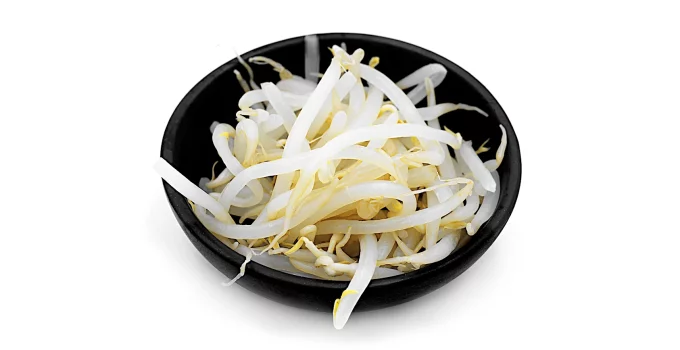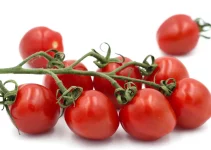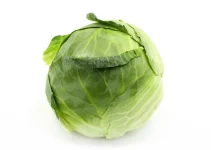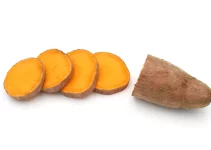You might have a hard time finding vegetable/legume/grain sprouts in supermarkets, which will lead you to searching for a bean sprout substitute. That’s totally understandable.
If you’ve ever tried cooking some of the most popular Asian dishes, you must have come across bean sprouts as an ingredient. Some of the most popular recipes are: stir-fries (bean sprout stir-fry, sautéed bean sprouts, chicken and bean sprouts stir-fry, Pad Thai etc.), soups, pho, salads, sandwiches, etc.
Or maybe you’re looking for a bean sprout substitute because you don’t like the taste of bean sprouts and you want to try the sprouts of other vegetables and see if they taste better in your favorite dishes.
Bean sprouts can taste spicy, sour or they can have an unusual smell. Some sprouts will have an earthy smell.
For others, the sprouts from mung beans can have a mild, clean, vegetal taste that doesn’t overwhelm the dish.
They’re mainly used for adding a crunchy, juicy element that absorbs the flavor of the other ingredients.
Others will say that mung bean sprouts taste like fresh green peas. As you can see, people will have different opinions when it comes to how certain ingredients taste.
If you don’t like these particular sprouts, don’t give up. There are other vegetable sprouts to use as a substitute until you find the perfect flavors for your dishes.
The best bread sprout substitutes are:
- soybean sprouts
- lentils sprouts
- chickpeas sprouts
- alfalfa sprouts
- pea sprouts
- sunflower sprouts
- cabbage family sprouts (broccoli, radish, mustard)
- onion family sprouts (chive, onion)
- clover sprouts
- fenugreek sprouts
- cabbage
- Napa cabbage
- enoki mushrooms
- sugar snap peas
- snow peas
- bamboo shoots
- bok choy
- broccoli rabe (rapini)
- canned beans
- leafy greens
- cucumbers
Table of Contents
Bean Sprout Substitute: Grow Your Own Grains/Legumes/Vegetables Sprouts
No matter your reason for searching for the best bean sprout substitutes, I’m glad that you’re here because I first want to talk about growing our own vegetable/legume sprouts.
Why am I talking about growing our own sprouts instead of covering the main topic of this article, substitutes for bean sprouts?
Because growing sprouts at home can be really easy. It will take a bit until you get the hang of things but that’s about it.
You should totally give it a go to see if it works out or not. If it doesn’t work out, you’re not losing anything, you’re back to buying sprouts when you find them in the stores near you.
I believe that it would be a waste to continue spending good money on sprouts from supermarkets when we could easily be growing our own.
However, I totally understand if you’re not good with growing sprouts or any other form of plants. In that case, you can skip my guide on how to grow our sprouts, bean sprouts included. Skip directly to the part where I talk about actual bean sprout substitutes and how they can work in recipes.
How to Sprout Seeds at Home
Sprouts are immature shoots of grains, legumes, vegetables. They’re a plant’s first tender stems. Once seeds have germinated, tiny sprouts, leaves grow from the seeds.
Vegetable seeds can be sprouted but grains and legumes are the most popular options for sprouts.
In order to sprout vegetables at home, you need:
-
- wide mouth glass jar – you can use a wide mouth mason jar or any other leftover jar that has a wide mouth (even big coffee jars work)
- cheesecloth or any other fine mesh to create a screen
- seeds – you’ll have to look for seeds for sprouting, microgreens or planting, whether you want to sprout soybeans, alfalfa, sunflower seeds, mung beans, etc.; most if not all are organic
There are also sprouting jar kits that you can buy. They’re pretty great because they already include everything we might need to sprout seeds.
These sprouting kits include:
- quart wide mouth glass jar (30 oz)
- rust proof strainer lid
- rust resistant stand
- glass drip tray
They certainly make things a bit easier if you have the needed tools. However, they’re a bit pricey.
If you don’t want to spend money on a kit, just get the above two items that I mentioned above and you’re ready to start a wonderful experience.
You can also buy sprouting lids separately. They work on wide mouth quart mason jars.
How to sprout seeds in 12 steps
1. Place the seeds in the jar.
2. Fill the jar with 3 times more water than we have seeds. Attach the sprouting lid or tightly tie a cheesecloth over the mouth of the jar. Don’t put any other lid on the jar, they need air.
3. Keep the seeds in a dark place for 8-12 hours. The easiest is to place them in a cupboard overnight for about 12 hours. That’s how we start the germination process.
4. After that, remove the jar from the dark place. Leave the cheesecloth or sprouting lid attached.
5. Rinse the seeds well.
6. Drain the water. The cheesecloth or sprouting lid has the purpose of making this rinse and drain very easy, no seeds will be spilled.
7. Shake the jar until the seeds are spread out thoroughly over the walls and bottom of the jar. If they’re left in clumps, they’ll rot.
8. Store the jar in a shaded place. Don’t let direct sunlight hit your jar but don’t place them in a cupboard back again, either. They need a shaded place, on the countertop works well.
9. Repeat the rinsing and draining of the seeds three times a day.
10. Do this rinsing and draining of the seeds 3 times/day for about 4 days. Do it only for 3 days if the sprouts are already big enough, which can happen for mung beans or lentils.
11. On the 4th day, the sprouts should appear. Rinse the sprouts and drain them one last time.
12. Place them in the sunlight for them to develop tiny leaves and turn green. If they’re kept in the shade, they will remain white. This exposure to sunlight can cover days 5 and 6 and then you can use the sprouts for cooking.
Check out this very helpful video for a visual guide.
How do you know when sprouts are ready to eat?
Sprouts can be grown from a variety of seeds in 4 to 6 days. That’s the general timeline for all sprouts, no matter which seeds you use for growing them.
Others can even be ready to eat in 3 days when just a small shoot is visible.
Others can take 6 days, like it’s the case for alfalfa or radish sprouts.
Harvesting sprouts also depends on how many tiny leaves you want them to have.
Usually, you can also tell your sprouts are ready to eat when they are ½ – 2 inches long (1.3 – 5 cm).
You can harvest them when the first pair of leaves have opened.
Which Seeds Can You Sprout as the Best Bean Sprout Substitute?
Whatever seeds you plan on sprouting, you should know that you should look for seeds that clearly state on the packaging that they’re for sprouting, for microgreens or for planting.
If you’re looking for a bean sprout substitute, these are your best options:
- soybean sprouts
- lentils sprouts
- chickpeas sprouts
- alfalfa sprouts
- pea sprouts
- sunflower sprouts
- cabbage family sprouts (broccoli, radish, mustard)
- onion family sprouts (chive, onion)
- clover sprouts
- fenugreek sprouts
1. Soybean sprouts
In order to grow your own soybean sprouts, you should look for organic soybeans for sprouting.
I recommend buying those that actually state that they can be used for sprouting because they’re smaller and you know that you’ll be successful. Regular soybeans won’t sprout easily.
Soy bean sprouts have a grassy, earthy, nutty flavor.
They also have a stronger bean flavor so, if you don’t enjoy that, look for a more mild-tasting bean sprout substitute, like alfalfa sprouts, pea sprouts, sunflower sprouts, etc.
One thing you should know is that soybeans should be soaked for a shorter amount of time. When we sprout seeds, you usually leave them with 3 times more water in a dark place for 8-12 hours. You should let the soy soak for about 4 hours. Other than that, you should follow the same steps.
2. Alfalfa sprouts
Alfalfa sprouts are incredibly popular. There’s a high chance that you’ve had at least one sandwich with alfalfa sprouts.
Surprisingly, the alfalfa plant isn’t used for cooking because the mature leaves are bitter.
The sprouts have a mild, nutty taste. You could also say that it’s a flavor similar to fresh peas.
The first step is to buy alfalfa seeds if you want to sprout the seeds at home. I recommend the organic kind.
In 5-6 days, you’ll get to enjoy your alfalfa sprouts in whatever dish you want, as an awesome substitute for bean sprouts in all dishes.
3. Pea sprouts
Pea sprouts are fantastic, crisp, tasty and tender.
They have a pea-like flavor but even fresher and, dare I say, tastier. You’re going to love them in everything.
4. Sunflower sprouts
These are just amazing. They’re sweet, have a flavor similar to fresh sunflower seeds with a hint of salad and freshness, and they have an awesome texture.
Sunflower sprouts should be tried at least once by everyone.
You’ll need to look for sunflower sprouting seed if you want to grow your own.
5. Lentils sprouts
They have an earthy, slightly sweet flavor, slightly peppery flavor. They’re not the most impressive for stir-fries but they can work if you have no other bean sprout substitute.
For sprouting, you can get red, green or brown lentil seeds.
6. Chickpeas sprouts (garbanzo bean)
If you’re looking for chickpea seeds for sprouting, you should actually be buying garbanzo beans for sprouting or microgreens.
The taste is similar to chickpeas but earthier and nuttier.
7. Cabbage family sprouts (broccoli, radish, mustard)
Cabbage sprouts have a mild, sweet and crisp cabbage taste.
Radish sprouts have a mild pepper flavor. If you love radishes, you’re going to adore these.
Broccoli sprouts can taste bitter to some so don’t get too excited about these. Others think they have a mild spicy flavor.
Mustard sprouts will taste exactly like you’d expect them to. They’ll have a medium mustard flavor. You have to love mustard greens to love these, that’s for sure.
Get whatever seeds for sprouting/microgreens belonging to the cabbage family that you can find.
Some might have an easier time finding Chinese cabbage sprouting seed, while others might find red cabbage sprouting seeds.
In the end, what you grow depends on the kinds of seeds you can find.
8. Onion family sprouts (chive, onion)
I wouldn’t say that sprouts from the onion family are the best bean sprout substitute. The sprouts that I mentioned above should be your first priority.
However, I wanted to mention sprouts from the onion family because they can be fantastic in Asian dishes.
Moreover, if you don’t have any green onions for your dishes, these sprouts can work so well.
Onion sprouts taste like onions so that’s really awesome because they will fit in whatever recipe you’re making without any problems.
If you want to grow your own, look for onion seeds for sprouting or garlic chive microgreen seeds.
9 Bean Sprout Substitutes that Are Not Sprouts
Now that we’ve covered all the sprouts that you can grow at home or buy from supermarkets to use as a bean sprout substitute, let’s see what other ingredients we can use as substitutes, too.
1. Cabbage, Napa cabbage
We talked about using sprouts from vegetables from the cabbage family as a bean sprout substitute but we can also use finely sliced cabbage in stir-fries, soups, salads, sandwiches, etc. as a substitute for many other sprouts.
If you don’t like the notion of eating sprouts, there’s nothing better than using cabbage instead because it works for all recipes. And it’s delicious. I’m sure that there aren’t a lot of people on this planet who don’t love cabbage, whether it’s eaten raw or cooked.
Cabbage tastes sweet, it’s crunchy, it works well with a wide array of ingredients, it can be easily found around the globe and it’s pretty cheap. It’s just perfect.
We can use green cabbage, red cabbage, Savoy cabbage, Napa cabbage or whatever other variety is popular where we live.
2. Enoki mushrooms
These are those tiny, adorable mushrooms that grow in bundles.
They’re perfect because they have a mild, slightly fruity taste. The crunchy texture is another bonus.
Individually, an enoki mushroom resembles the size of a sprout, it just doesn’t have tiny green leaves.
If you love mushrooms in anything, you can use them for stir-fries, soups and salads.
You can even make crispy enoki mushrooms. They are delicious in absolutely everything, including for sandwiches and as garnish for so many dishes.
To make crispy enoki mushrooms, you need the mushrooms, cornstarch, baking powder, salt, white pepper, garlic powder and oil for deep frying.
For a spicy kick, you can add Sichuan peppercorns, sweet paprika.
3. Snow peas and sugar snap peas
These two varieties are at their most delicious when they’re eaten raw or they’re slightly cooked.
They’re delicious, bright, colorful, sweet and crispy.
Snow peas and sugar snap peas are amazing for stir fries, salads, quick sautés.
They’re the perfect garnish. If you don’t like ingredients like bean sprouts or asparagus or broccoli, then use these two vibrant peas when they’re in season.
4. Bamboo shoots
Bamboo shoots have been a popular ingredient in Asia for thousands of years. They’re enjoyed in stir fries, soups, stews, curies, salads, rice dishes, etc.
However, fresh bamboo shoots are not easy to find everywhere around the globe. If you live in an area with Asian market, you’ll be able to find fresh bamboo shoots.
Otherwise, we’re left with using the canned ones, which might not always be so cheap.
5. Bok choy
Another perfect leafy green for stir-fries is bok choy. It can also be added to pho. It will work in pretty much all Asian dishes as a bean sprout substitute.
You can add as much bok choy as you want, it’s quite delicious and very easy to cook.
6. Broccoli rabe (rapini)
If you’re looking for substitutes for stir-fries or soups, broccoli rabe is an amazing bean sprout substitute.
If you don’t find this more delicate variety, just use broccoli. That one is more easily available in stores and it’s easy to find frozen broccoli at a decent price.
7. Canned beans
You can add canned beans to a few recipes instead of bean sprouts. Those recipes mostly involve soups and salads. They are also used in rice dishes.
One the other hand, you can’t use canned beans for stir-fries, which are the main dishes where sprouts are actually used.
8. Leafy greens
If you’re making a sandwich recipe that uses bean sprouts, use whatever leafy greens you prefer as a substitute.
The easiest to find and use is lettuce but you can also use arugula, baby spinach, watercress, etc.
9. Cucumbers
If you want to make pickled bean sprouts but you don’t actually like sprouts that much or you can’t find any to buy, then use cucumbers as the perfect bean sprout substitute for pickles.
You can use the large holes on a box grates or cut them into julienne. Both will look good.
How to sprout beans
Let’s see which are the best beans to sprout. Pick whichever is the easiest to find where you live. Then, follow the guide I wrote above and you can grow your own bean sprouts.
Now, let’s see which beans you can sprout:
- mung beans – if you’re trying to grow your own bean sprouts, you should know that mung beans are the best to sprout
- adzuki beans – these are another popular option but mung beans remain the top choice for sprouting
How long does it take for beans to sprout?
The usual timeline you should actually expect is 4 to 6 days for sprouts to be ready for your dishes.
It depends on two factors: bean variety and temperature. You’ll just have to be patient as you experiment with different varieties.
Sprouting beans temperature
A temperature between 70 to 80 degrees Fahrenheit (21-26 degrees C).
It’s the usual temperature most of us have in our houses throughout the year. There’s no need to create special conditions.
If temperatures are slightly higher, sprouts will grow more quickly but they’ll be thinner.
If you want sprouts to grow more quickly, you just need higher temperatures.
Should bean sprouts be grown in the dark?
Only during the first 8-12 hours are the seeds kept in the dark in 2-3 times as much water.
For the next 4 days the jar is kept in the shade. For the next 2 days, the seeds are taken into sunlight to get tiny green leaves.
All in all, I hope that you’ll be able to find the perfect bean sprout substitute for your cooking or maybe you’ll even consider sprouting seeds at home for an endless supply of freshly harvested sprouts from whatever seeds you want.




